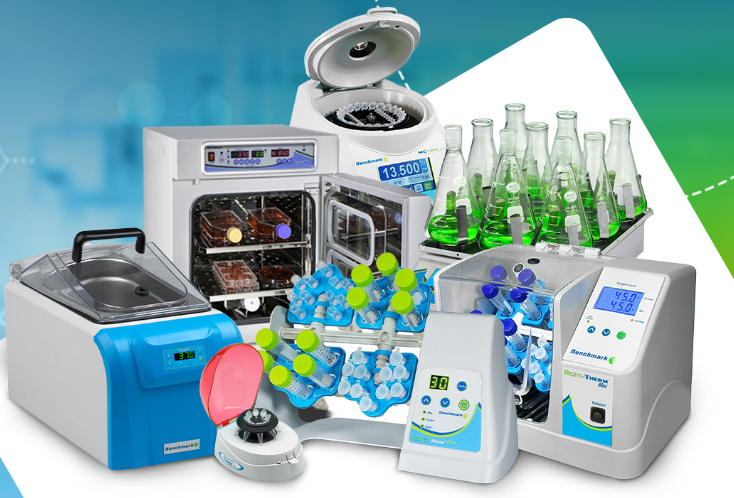Equipping Your Laboratory: Essential Tools for Scientific Tests

Laboratories stand as modern-day alchemist workshops, where scientists and researchers unravel the mysteries of the universe, unlock medical breakthroughs, and push the boundaries of human knowledge. Yet behind every scientific feat lies a treasure trove of essential laboratory equipment. In this comprehensive guide, we’ll journey through the indispensable tools that form the backbone of scientific experimentation, ensuring precision, reproducibility, and success.
1. Microscopes
Microscopes serve as windows into the microscopic world, enabling scientists to observe and analyze the intricate structures of cells, tissues, and microorganisms. From the humble compound microscope to the sophisticated electron microscope, these instruments come in various forms, each tailored to specific research needs. Optical microscopes are ideal for studying biological samples, while electron microscopes offer unparalleled resolution for delving into the nanoscale realm.
2. Centrifuges
Centrifuges are indispensable laboratory equipment for separating substances based on density and are crucial for applications ranging from isolating cellular components to purifying DNA and separating immiscible liquids. By subjecting samples to high-speed rotation, centrifuges cause particles to sediment according to their mass, facilitating precise separation and purification processes. Benchtop centrifuges, with their compact size and versatility, find a place in laboratories of all sizes and disciplines.
3. Incubators
Incubators provide a nurturing environment for cultivating microorganisms, cells, and tissues by regulating temperature, humidity, and sometimes CO2 levels. These controlled environments mimic physiological conditions and are essential for cell culture, microbiology, and molecular biology experiments. Advanced models offer programmable features, allowing researchers to tailor conditions to the specific needs of their experiments, fostering optimal growth and viability.
4. Spectrophotometers
Spectrophotometers are used for quantifying the concentration of substances in solution by measuring their absorbance or transmission of light at specific wavelengths. Widely used in molecular biology and biochemistry laboratories, this laboratory equipment enables researchers to determine the concentration of analytes such as DNA, proteins, and chemicals with precision and accuracy. UV-Vis spectrophotometers, in particular, find widespread application in nucleic acid and protein quantification.
5. PCR Machines
Polymerase Chain Reaction (PCR) machines revolutionize molecular biology by enabling the amplification of specific DNA sequences. Essential for applications such as DNA sequencing, gene expression analysis, and genetic engineering, PCR machines offer precise temperature control and real-time monitoring, enhancing experimental efficiency and reproducibility. Whether performing routine PCR or cutting-edge research, these instruments empower scientists to unravel the intricacies of the genetic code.
6. Analytical Balances
Accurate measurements form the cornerstone of scientific research, and analytical balances ensure the precise weighing of substances with high precision and sensitivity. Found in chemistry, pharmacology, and material science laboratories, these instruments play a vital role in dosing reagents, preparing solutions, and conducting quantitative analyses. From micrograms to kilograms, analytical balances deliver reliable measurements essential for scientific inquiry.
7. Autoclaves
Sterilization is paramount to preventing contamination and ensuring the reproducibility of experimental results. Autoclaves utilize high-pressure steam to sterilize laboratory equipment, media, and glassware, eliminating bacteria, viruses, and fungi. Essential for microbiology, biotechnology, and medical laboratories, autoclaves safeguard the integrity of experiments and the health of researchers by maintaining aseptic conditions.
8. pH Meters
pH meters are indispensable for measuring the acidity or alkalinity of solutions, providing precise pH readings essential for chemistry, biochemistry, and environmental science laboratories. These laboratory equipment enable researchers to monitor chemical reactions, optimize growth conditions, and maintain the stability of biological samples with accuracy and reliability. From basic benchtop models to advanced multiparameters, pH meters cater to diverse research needs.
9. Safety Cabinets
Safety cabinets, also known as biological safety cabinets or fume hoods, provide a safe working environment for handling hazardous materials, protecting researchers from exposure to harmful chemicals, pathogens, and airborne contaminants. Essential in microbiology, virology, and biomedical laboratories, safety cabinets ensure the safety of personnel and the integrity of experiments, fostering a culture of responsible scientific practice.
10. Gel Electrophoresis Systems
Gel electrophoresis is a fundamental technique for separating and analyzing DNA, RNA, and proteins based on size and charge. Consisting of an electrophoresis chamber, power supply, and gel casting apparatus, these systems find application in molecular biology, genetics, and biotechnology research. Whether resolving complex mixtures or characterizing molecular profiles, gel electrophoresis systems empower researchers with insights into the building blocks of life.
How to Keep Lab Equipment in Good Condition?
Equipping laboratories with essential equipment is important for performing scientific studies. However, maintaining these lab supplies is also essential to ensuring accurate and reliable results, prolonging the lifespan of instruments, and promoting laboratory safety. Here are some key points on how to maintain your lab equipment:
- Regular Cleaning: Establish a routine cleaning schedule for laboratory equipment to prevent the buildup of contaminants and maintain optimal performance. Use appropriate cleaning agents and techniques recommended by the manufacturer to avoid damaging sensitive components.
- Calibration and Verification: Regularly calibrate laboratory instruments to ensure accurate measurements and reliable results. Calibration should be performed according to manufacturer guidelines or industry standards. Additionally, verify instrument performance using certified reference materials or standard operating procedures.
- Preventive Maintenance: Implement a preventive maintenance program to identify and address potential issues before they escalate. Conduct routine inspections, lubrication, and adjustments as per manufacturer recommendations. Keep detailed records of maintenance activities, including dates, procedures, and any observed abnormalities.
- Training and Education: Provide training and education to laboratory personnel on proper instrument operation, maintenance procedures, and safety protocols. Ensure that staff members are familiar with equipment manuals, troubleshooting guides, and emergency procedures to handle any issues that may arise.
- Storage and Handling: Store laboratory equipment in designated areas away from direct sunlight, moisture, extreme temperatures, and corrosive chemicals. Use protective covers or cases to shield instruments from dust, debris, and accidental damage. Handle equipment with care to avoid impacts, vibrations, and mishandling.
- Documentation and Recordkeeping: Maintain thorough documentation of equipment maintenance, repairs, calibration, and usage history. Keep detailed records of service reports, calibration certificates, and spare parts inventory to track instrument performance and compliance with regulatory requirements.
Conclusion
Laboratory equipment stands as the unsung hero of scientific exploration, enabling researchers to venture into the unknown, unravel the mysteries of the natural world, and make transformative discoveries that shape our understanding of reality. From microscopes that reveal the hidden wonders of the microscopic realm to PCR machines that unlock the secrets of the genetic code, each instrument plays a vital role in advancing human knowledge and driving innovation forward. By equipping laboratories with these essential tools, scientists empower themselves to push the boundaries of possibility, paving the way for a brighter and more enlightened future.




